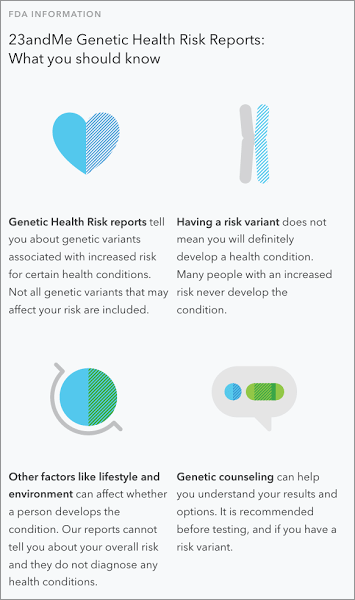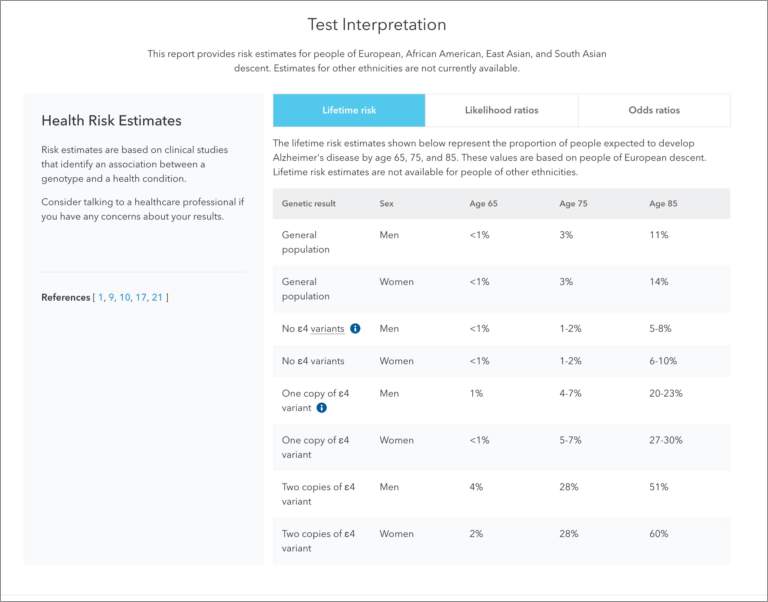May 19, 2017
23andMe recently started offering customers new Genetic Health Risk reports that have received FDA authorization. Below we’ve highlighted some important features in these reports to help you get more out of them.
While the reports may have important information about your health, they also could raise issues you hadn’t considered. All customers are provided details on the type of information conveyed in the new reports before they decide whether to opt into seeing them or not.
For some serious conditions that do not currently have effective treatments or cures — namely late-onset Alzheimer’s disease and Parkinson’s disease — 23andMe customers must take an additional step to opt-in to viewing these two reports. Customers can choose not to view them but still see all other health reports if they wish.
The extra step to opt-in to the reports on late-onset Alzheimer’s disease and Parkinson’s disease is meant to ensure that customers consider carefully whether or not they want to know about their genetic risk for these serious conditions. If a customer moves forward with accessing their health information, it’s important to know that these reports are not intended to diagnose a disease or condition. Having a variant associated with an increased risk for a condition doesn’t mean you’ll get that condition.
Conversely, if you don’t have the variant it doesn’t mean you are free of risk. Your genetic risk for these conditions is but one of many factors, such as lifestyle, environment and family history, that play a role. (As with any test, it is also possible to receive a “Not Determined” result. This is rare, and can be caused by random test error or other factors that interfere with the test.)Another important aspect of these reports is that 23andMe doesn’t test for all the possible genetic variants that could influence risk for these conditions. Even if a person’s report says that no variants were detected, that person could still have a variant not covered by the test that may affect risk for the condition. 23andMe’s reports include only variants that can be detected and validated on our genotyping chip, and the reports do not include many rare variants not available on our chip or variants that have not yet been discovered.
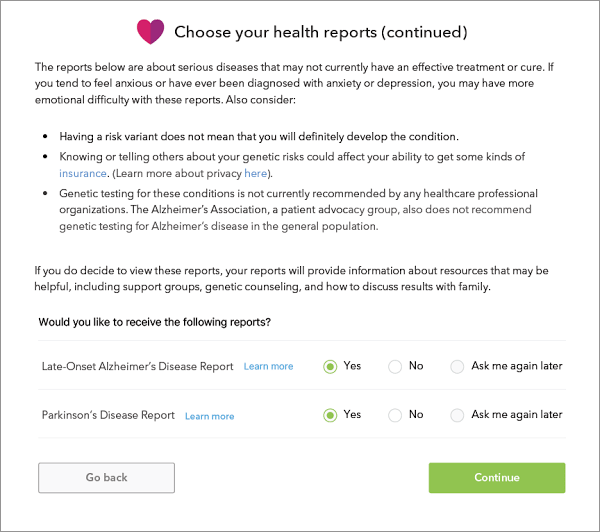
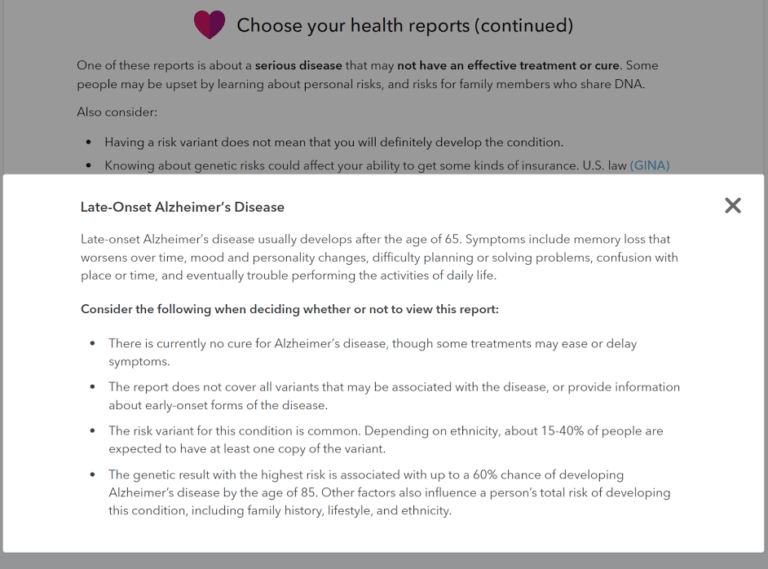
About the Reports
Each report is broken into a similar structure that includes your results, an explanation of what they mean, an overview of the condition, other factors that may influence risk, suggested next steps, and additional resources. This is all done in clear and easy to understand language, and the reports are structured in a way that allows you to go deeper into different sections to learn more if you wish.
The Overview page summarizes a person’s result, such as the number of variants detected and whether this is associated with increased risk, and provides brief but important points for understanding what the result means. This page also includes important information about what the test does and doesn’t do, and how a person’s ethnicity may matter. More information about the condition, including how common it is, typical signs and symptoms, and other risk factors are also highlighted. Many of these sections provide links to the Scientific Details page where customers can find more information and supporting references. The Overview page also provides quick links to genetic counseling, frequently asked questions, and printing to share with a healthcare professional.
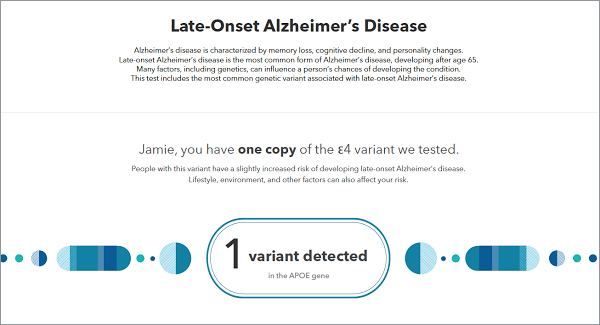
In the Scientific Details page you’ll find more information about the genes and variants tested, health risk estimates associated with those variants in different populations, and clinical and analytical performance of the test. There will also be detailed information about other factors that influence whether a person develops the condition. All scientific references supporting the information in the report are provided at the bottom of this page.
Understanding Risk Estimates
Our Genetic Health Risk reports focus on the general level of risk associated with a person’s genetic result. So for example, the report might state that you are “not likely at risk,” or that you are at “increased risk” based on the variants tested. But in some cases the report may also provide specific numerical estimates of the risk. These estimates may also be described in more detail in the “Test Interpretation” section of the Scientific Details page, and depend on available scientific studies. For this reason, the exact types of risk estimates, and the populations or ethnicities that they apply to, differ from report to report.
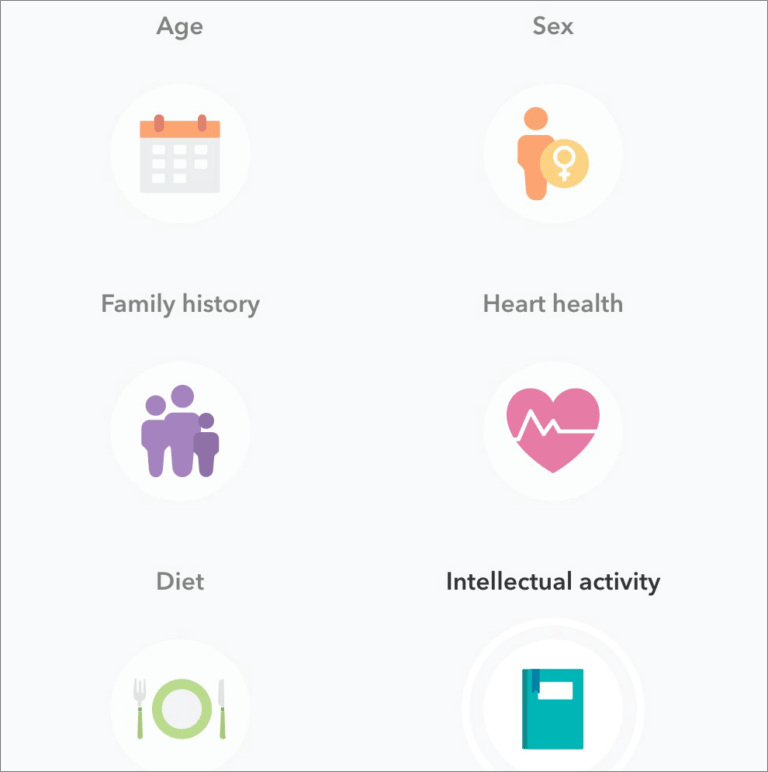
The types of risk estimates found in our reports may include lifetime risks, odds ratios, and likelihood ratios. Lifetime risk estimates are the most straightforward to understand — they simply represent the chances of developing the condition by a certain age. Similarly, incidence represents the number of people diagnosed with a condition in a given time period. Odds ratios and likelihood ratios are a bit different in that they reflect the difference in risk between one scenario and another scenario. Odds ratios usually compare the odds of a disease or condition in one group (such as people with a risk variant) to the odds in a reference group (such as people without the risk variant). Likelihood ratios compare the probability of a disease or condition given a test result to the probability prior to knowing the test result.
All types of risk estimates are applicable only to the populations or ethnicities specified in each report, though people of other ethnicities can view the information for educational purposes.An important aspect to understand about risk estimates is that, being estimates, they have some amount of uncertainty. This is often conveyed using a “confidence interval,” which shows the range of possible likely values for that risk estimate. The wider that range, the less certain the specific risk estimate is. The confidence intervals for risk estimates based on published studies can be found in the references for those studies. The confidence intervals for risk estimates calculated by 23andMe can be found by clicking the button “See 95 percent confidence intervals” underneath those risk tables.
A Final Note
We strive to help our customers get the most out of their experience, and so each Genetic Health Risk report includes Frequently Asked Questions tailored to each customer’s results, in addition to our Customer Care center which is always available.While 23andMe Genetic Health Risk reports do not diagnose diseases or conditions, they do include potentially important information that you could use to help be more proactive about your health and engage in your own wellness. That may also include talking to your doctor, a genetic counselor or other health professional. Genetic counselors in particular are well-suited to help people who have questions about genetic risks and genetic testing. If you have specific questions or concerns about your health, we encourage you to contact a healthcare professional.
